Rich Hoyer on his recently completed tour, Bolivia: Barba Azul Nature Reserve, Sadiri Lodge, and the Apolo Valley
You can’t help but marvel at Bolivia’s diversity when you experience the extreme variety of landscapes and habitats as we did on our just completed inaugural tour of the northern departments of La Paz and Beni. We started in the high Andes, visiting Lake Titicaca and the gradual pass of Pumasani on our way to and from the Apolo area – where we birded in the fog, snow, and sun, but happily without the usual annoying wind. Titicaca provided us with easy and delightful families of the flightless Titicaca Grebe, but it was a bold Plumbeous Rail that stole the show on our second morning there.
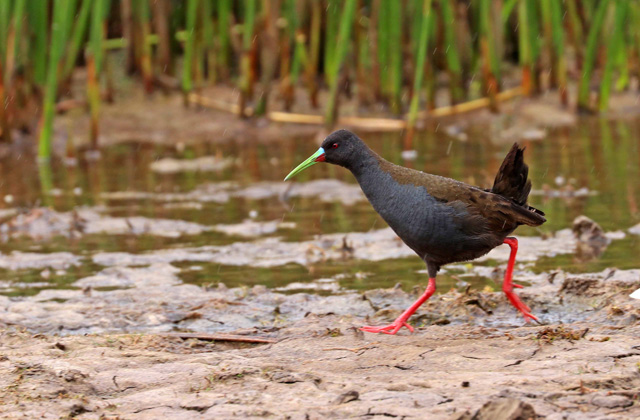
Plumbeous Rail Photo: David Fisher
The high Andes had some exciting ground-tyrants, earthcreepers, miners, canasteros, and others. A frequent sight along the roadsides (and at our picnic sites as we departed) were beautiful Mountain Caracaras.
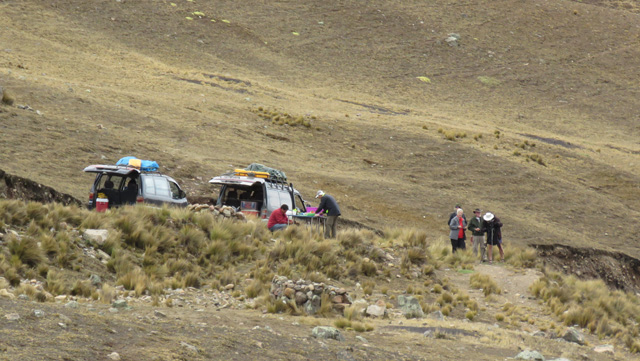
Picnic Lunch N of Charazani Photo by Rich Hoyer
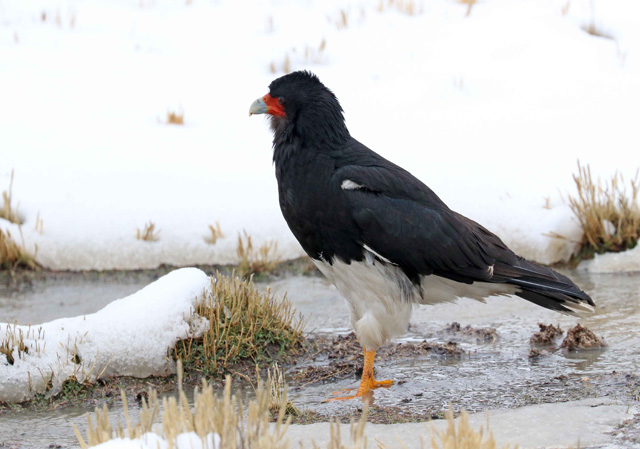
Mountain Caracara Photo:David Fisher
We had some truly incredible experiences with world-class birds during our time in the Apolo-Atén areas. Finding a pair of the endemic “Palkachupa” subspecies of Swallow-tailed Cotinga at our breakfast location was a bit of a surprise, as we hadn’t yet driven to the location where we were supposed to start looking for them.
Swallow-tailed Cotinga Photo: Rich Hoyer
Another exciting moment came when we found a bird that few people have seen, as its precise distribution and migratory behavior have yet to be fully determined, and it doesn’t even have a name yet. First discovered by Dan Lane and Gary Rosenberg while they were leading a WINGS tour in Peru in 2000, they saw it again in 2003, and that was the last time a birding group like ours had seen one until now. Rumor has that the final manuscript with the species description may be published within a year.
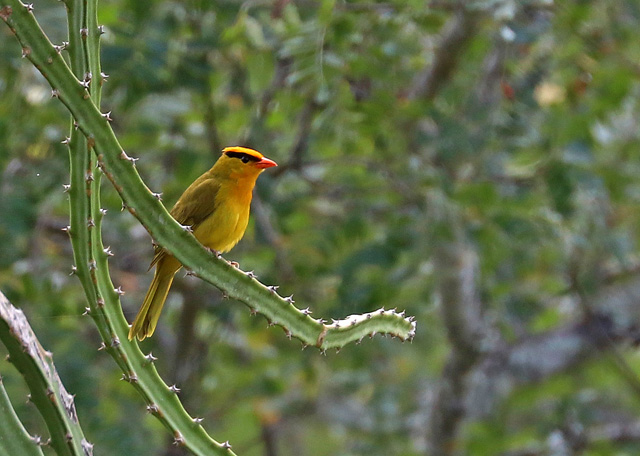
'San Pedro' Tanager Photo: David Fisher
Next came our time at the lovely Sadiri Lodge, with its wonderful food, delightfully hospitable staff, and super competent birding guides, where we experienced a mix of Amazonian and Andean foothill specialties. Band-bellied Owl, Sharpbill, and the scarce Yungas Tyrannulet were of among the species belonging to the former community, while a lucky encounter with a pair of Hairy-crested Antbirds, Yellow-shouldered Grosbeaks, and a pair of White-throated Woodpeckers in a flock near the lodge were some species with more Amazonian affinities.
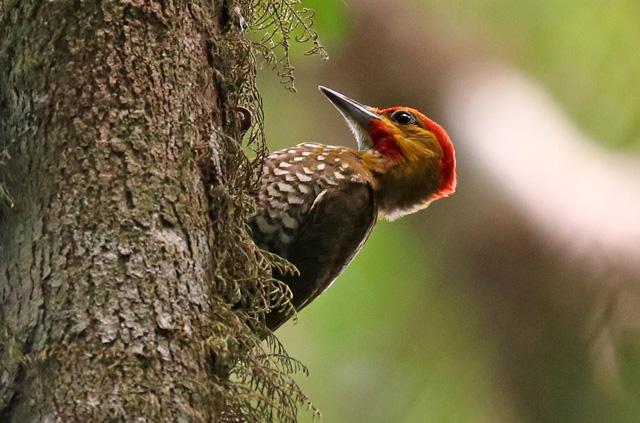
White-throated Woodpecker Photo: David Fisher
Sadiri’s tanager flocks didn’t fail to delight us, and one particular mob assembled in a perfect display of riotous color.
Tanager Mob Photo: Rich Hoyer
Our group was the first such birding tour to visit the recently improved Barba Azul Nature Reserve. We saw our first Blue-throated Macaws the afternoon of our arrival, eventually seeing a flock of seven of these highly endangered birds.
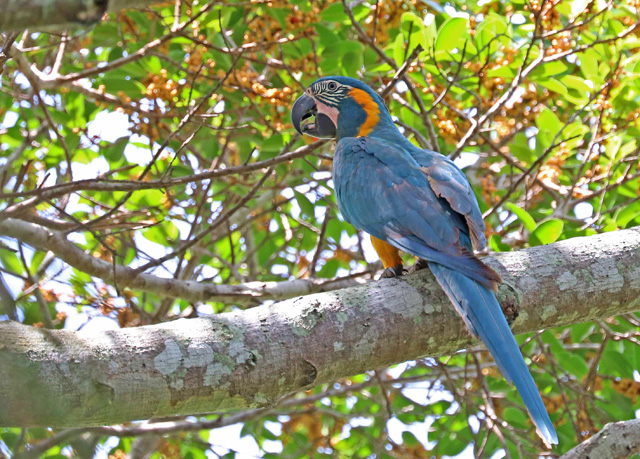
Blue-throated Macaw Photo: David Fisher
The birding here was terrifically fun, especially along the marshes of the Omi River that runs through the property – complete with Long-winged Harrier, Least Bittern, and Ash-throated Crake.
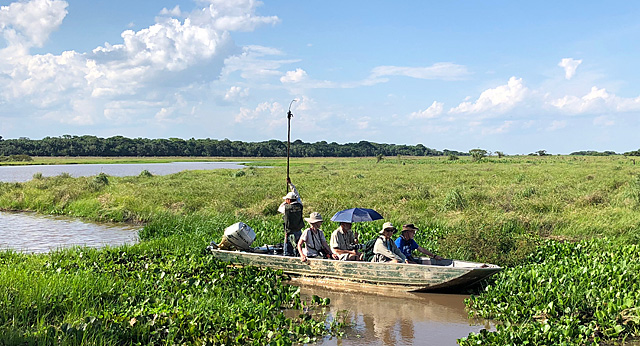
Boat ride at Barba Azul Photo: Rich Hoyer
The ungrazed and unburned expanses of seasonally flooded savanna are home to some very scarce birds, such as Cock-tailed Tyrant, where we watched one do its astonishing flight display at a female.
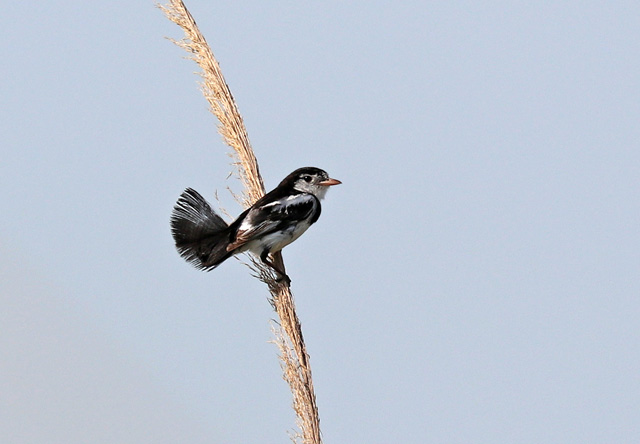
Cock-tailed Tyrant Photo: David Fisher
This place is also home to a good variety of mammals, and we watched Black-and-gold Howler Monkeys grunt in the trees, a Six-banded Armadillo cross the airstrip, and a Giant Anteater gallop across a pasture.
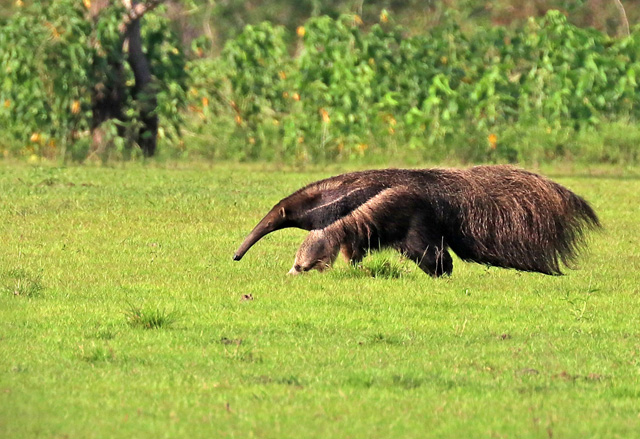
Giant Anteater Photo: David Fisher
